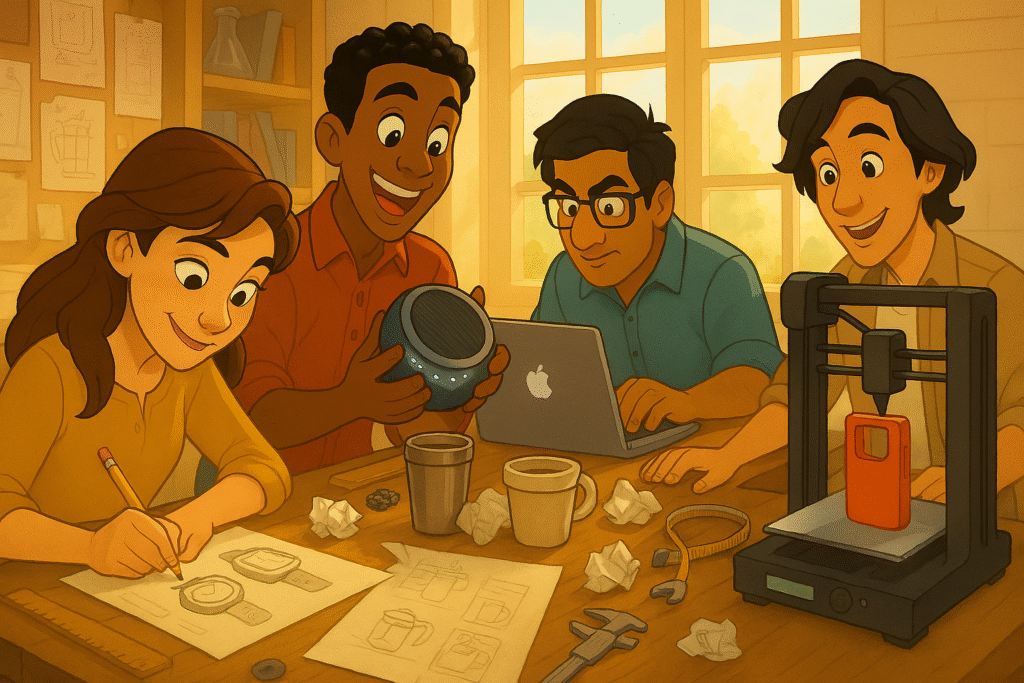
A Sunday salute to the dreamers, makers, and stubborn optimists who refuse to accept “good enough”
This morning I’m thinking about the relentless optimism of product makers.
You know the stats. Between 70 and 95 percent of new products fail spectacularly.
Most innovations die lonely deaths in warehouses, forgotten app stores, or liquidation sales.
The smart money says “don’t even try.”
Yet here you are, sketching prototypes on napkins and obsessing over user flows at 2 AM.
What drives someone to remortgage their house for an unproven idea?
To spend years perfecting something the world doesn’t know it needs yet?
To keep iterating after the fifteenth rejection, the third pivot, the latest “market isn’t ready” feedback?
I’ve worked with hundreds of innovators over three decades, and the answer is always the same:
They can’t NOT build it.
There’s something broken in the world that they’re uniquely positioned to fix.
A frustration so personal, SO persistent, that creating a solution becomes inevitable.
The founders of Embr Labs couldn’t ignore how hot flashes were derailing women’s careers and sleep, after four MIT students couldn’t stand working in a freezing lab without control over their environment.
BzzzzKill‘s creator spent decades frustrated by the 60-cycle hum in his Stratocaster guitars — a problem that’s plagued musicians since Leo Fender’s first designs. He created over 200 prototypes working to get it right.
Instant Pot‘s Robert Wang was tired of spending hours cooking meals for his family while juggling a demanding engineering career.
None of them set out specifically to become entrepreneurs.
They just refused to accept that certain problems were “just the way things are.”
In I Need That, I wrote about how genuine innovation starts with recognizing an unmet need — usually one you experienced personally. The most successful products come from founders who couldn’t tolerate their own status quo.
But here’s what makes product makers so damn extraordinary:
They don’t grumble and complain about problems. They architect solutions.
They don’t waste time dreaming about better futures. They build them, prototype by prototype.
They absorb rejection as data, not discouragement.
Product Payoff: When Dyson founder James Dyson created 5,126 failed prototypes before perfecting his revolutionary vacuum design, he wasn’t purely masochistic. Each “failure” taught him something essential about airflow, suction, and cyclone technology.
His persistence paid off when Dyson became the world’s leading vacuum brand, proving that breakthrough innovation requires breakthrough commitment.
Start with this: Take five minutes today to remember why you started building what you’re building.
Write down the original frustration that sparked your idea — not the market opportunity or business case, but the personal pain point that made you think “there has to be a better way.”
Pin that reminder somewhere visible. On difficult days, it’ll reconnect you to your deeper purpose.
The world needs what you’re building, even if it doesn’t know it yet.
Especially because the odds are stacked against you.
History belongs to the people stubborn enough to keep building anyway.
What’s the frustration that sparked your current project?
Hit that reply arrow and share the moment you decided the world needed what you’re creating.
Or reach out to my team of product marketing strategists at Graphos Product.
